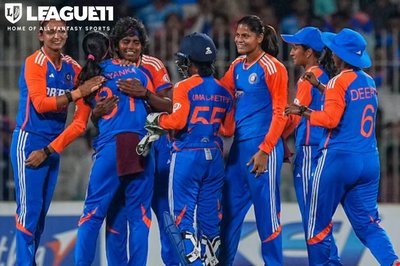New Rulebook ICC's Stop Clock and DRS Tweaks Will Change Cricket

ICC Cricket Rules 2025: Stop Clock, DRS Tweaks & Saliva Update
With major changes affecting play speed, decision-making, and ball management, the International Cricket Council (ICC) has announced a major revision of its playing conditions. These modifications are designed to enhance the game's flow, promote fairness, and reduce controversy in all formats. Some are currently in place for the 2025–27 World Test Championship cycle, while others will be implemented for white-ball events starting on July 2, 2025.
The governing body's website, the ICC Test Match Playing Conditions, states that the stop clock, similar to that used in limited-overs cricket, has been used to eliminate the problem of sluggish over-rate.
Stop clock in Test cricket
Due to the format's history of sluggish over rates, the ICC has decided to use a stop clock in Test cricket one year after it was first implemented in white-ball forms. The regulation states that within a minute of the conclusion of the previous over, the fielding side must be prepared to begin another.
If they don't do so, the umpires will give them two warnings. Following those warnings, the bowling team will get a five-run penalty from the umpires. After every 80-over block, the number of warnings will be reset to zero. Additionally, the clock will count from 0 to 60 in ascending order. This regulation has been in effect from the start of the 2025–2027 WTC cycle.

Use of Saliva
The ICC no longer requires umpires to replace the ball once they find saliva on it, according to ESPNcricinfo. The prohibition on using saliva is still in effect.
According to the website, fielding teams may purposefully spit on the ball to cause a change; however, this is not included in the current document on men's Test cricket playing conditions.

DRS calls
In addition, the ICC stated that the procedure will be conducted chronologically, essentially following the sequence in which the player and the on-field umpire make their recommendations.
If an on-field umpire deems a judgment "out" after a second review, the ICC mandated that the default decision for the next manner of dismissal would remain "out."
Deliberate short run
To date, the batting side would have been penalized five runs if a hitter had been detected intentionally taking a short run. The umpires will now ask the fielding side to choose which batter they want on strike if it is determined that a batter has purposefully failed to make their ground to steal an additional run. The five-run penalty will also remain a component of the punishment.
According to Rule 18.5.1 of the playing conditions, an intentional short run occurs when at least one batsman purposefully fails to make good their ground at one end to seem as though they have run more than one run. "If the umpire thinks that the batter in question had no intention of misleading them or scoring the run in which they failed to reach their ground, they may decide to abort the run.


























